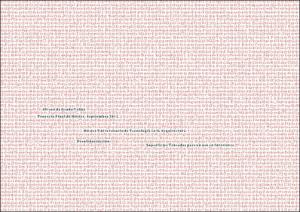Mostra el registre d'ítem simple
Desolidarización: superficies tensadas para un uso en interiores
| dc.contributor | Zamora i Mestre, Joan-Lluís |
| dc.contributor.author | de Grado Vallet, Álvaro |
| dc.contributor.other | Universitat Politècnica de Catalunya. Departament d'Enginyeria de la Construcció |
| dc.contributor.other | Universitat Politècnica de Catalunya. Departament d'Estructures a l'Arquitectura |
| dc.contributor.other | Universitat Politècnica de Catalunya. Departament de Construccions Arquitectòniques I |
| dc.date.accessioned | 2012-10-01T13:31:41Z |
| dc.date.available | 2012-10-01T13:31:41Z |
| dc.date.issued | 2012-09 |
| dc.identifier.uri | http://hdl.handle.net/2099.1/16131 |
| dc.description.abstract | El estudio se centrará en la desolidarización, entendida como el uso de sistemas que se yuxtaponen sin quedar adheridos a la capa subyacente. En concreto, se estudiará la aplicación de los sistemas de acabado elásticos tensados para las superficies interiores de espacios cerrados. Es una tecnología que se empezó a plantear desde hace 10-15 años mayoritariamente en techos. Se puede englobar dentro de la construcción con membranas pero teniendo las peculiaridades de los requerimientos de un uso en interiores. Esto hace que no se tenga que dar respuesta a ciertas exigencias, a la vez que surgen otras nuevas. Abstract: The study will focus on uncoupling construction, defined as the use of systems that overlap without being attached to the underlying layer. Specifically, we review the implementation of Stretch Elastic Interior Surfaces finishing systems of enclosed spaces. It is a technology that was first raised for some 10-15 years mostly on ceilings. Can be included in the construction of membranes but taking the peculiarities of the requirements for indoor use. This does that not have to respond to certain requirements, while emerging new ones. The study will focus on uncoupling construction, defined as the use of systems that overlap without being attached to the underlying layer. Specifically, we review the implementation of Stretch Elastic Interior Surfaces finishing systems of enclosed spaces. It is a technology that was first raised for some 10-15 years mostly on ceilings. Can be included in the construction of membranes but taking the peculiarities of the requirements for indoor use. This does that not have to respond to certain requirements, while emerging new ones. http://www.grava86.es/ |
| dc.language.iso | spa |
| dc.publisher | Universitat Politècnica de Catalunya |
| dc.rights | Attribution-NonCommercial-ShareAlike 3.0 Spain |
| dc.rights.uri | http://creativecommons.org/licenses/by-nc-sa/3.0/es/ |
| dc.subject | Àrees temàtiques de la UPC::Arquitectura |
| dc.subject | Àrees temàtiques de la UPC::Edificació::Materials de construcció |
| dc.subject.lcsh | Tensile architecture |
| dc.subject.lcsh | Interior decoration |
| dc.subject.lcsh | Building materials |
| dc.title | Desolidarización: superficies tensadas para un uso en interiores |
| dc.type | Master thesis |
| dc.subject.lemac | Estructures atirantades |
| dc.subject.lemac | Interiorisme |
| dc.subject.lemac | Materials de construcció |
| dc.rights.access | Open Access |
| dc.audience.educationlevel | Màster |
| dc.audience.mediator | Escola Tècnica Superior d'Arquitectura del Vallès |
| dc.audience.mediator | Escola Tècnica Superior d'Arquitectura de Barcelona |
| dc.audience.degree | MÀSTER UNIVERSITARI EN TECNOLOGIA A L'ARQUITECTURA (Pla 2009) |


